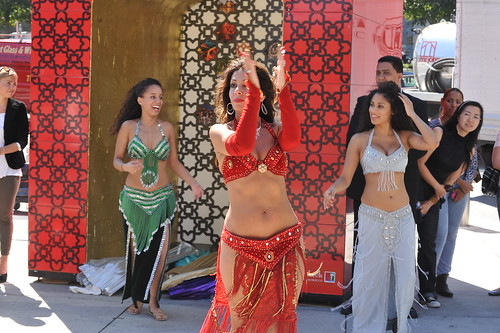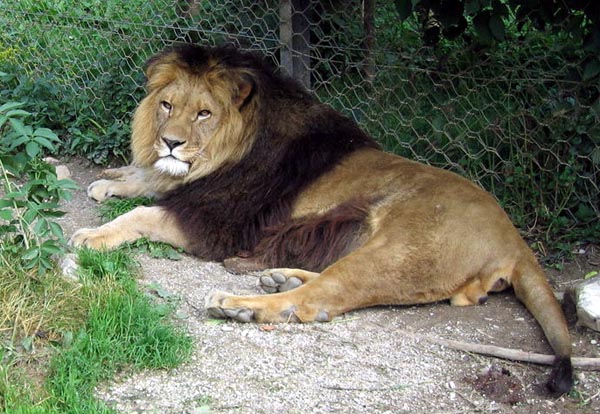
Tétouan was of particular importance in the Islamic period, from the 8th century onwards, since it served as the main point of contact between Morocco and Andalusia. After the Reconquest, the town was rebuilt by Andalusian refugees who had been expelled by the Spanish. This is well illustrated by its art and architecture, which reveal clear Andalusian influence. Although one of the smallest of the Moroccan medinas, Tétouan is unquestionably the most complete and it has been largely untouched by subsequent outside influences.
Brief synthesis
The Medina of Tétouan developed on the steep slopes of the Jebel Dersa. In the Islamic period it had particular importance from the 8th century onwards since it served as the point of connection between Morocco and Andalusia. After the Reconquest, the town was rebuilt by refugees in this region who had been expelled by the Spanish. This is well illustrated by its art and architecture which reveal clear Andalusian influence. It is one of the smallest of the Moroccan medinas but indisputably the most complete and the majority of its buildings have remained untouched by subsequent outside influences.

The Medina of Tétouan is surrounded by a historic wall of approximately 5 km in length and accessed by means of seven gates. The urban layout is characterised by main streets linking the gates to one another and giving access to open spaces (squares and smaller squares) and public buildings such as funduqs, mosques, zawayas and to the artisan and commercial districts, and on the other hand to smaller lanes leading to passages and semi-private residential areas. A true synthesis of Moroccan and Andalusian cultures, the historic town of Tétouan presents urban and architectural features that have influenced the architectural and artistic development during the period of the Spanish Protectorate. The town of Tétouan is famous for its school of arts and crafts (Dar Sanaa) and its National Institute of Fine Arts which testify to an ancestral tradition and an opening onto the world today.

Criterion (ii): The Medina of Tétouan bears witness to the considerable influences of Andalusian civilization towards the end of the medieval period of Muslim Occident. This influence is illustrated in developments in architecture, monumental arts and town-planning.
Criterion (iv): The Medina of Tétouan constitutes an outstanding example of a fortified Mediterranean coastal town, built against a North Moroccan mountain landscape. It testifies to the antiquity of the settlement, and during the Islamic period it gained considerable importance as the only connection between the Iberian Peninsula and the interior of Morocco. Its expansion from the beginning of the 17th century continued until the end of the 18th century and is reflected in its fortifications, architecture, synthesis of Moroccan and Andalusian cultures and its urban fabric.
Criterion (v): The strategic position of the Medina of Tétouan opposite the Straits of Gibraltar played an important role as the point of contact and of transition between two civilizations (Spanish and Arab) and two continents (Europe and North Africa).
Integrity (2009)
The boundaries of the property include all the attributes that are necessary to express its Outstanding Universal Value. Some of the attributes require conservation measures and priority as concerns conservation work is given to the ramparts, gates and to the borjs (fortified watch towers). The municipality cooperates with the Government of Andalusia (Spain) in carrying out rehabilitation work in the centre of the Medina.
Authenticity (2009)
The authenticity of the Medina is illustrated by its original urban layout practically intact and its initial design with surrounding wall, gates, and fortified constructions. Their construction dates back to the 18th century and still conserves their configuration and original materials. The Medina possesses an original urban fabric characterised by the hierarchy of streets and division of residential, commercial and artisan areas following a clearly defined plan. In general, the built heritage such as the zawayas, fountains, hammams, ovens, and historic silos, have retained their authenticity, be it in their shape, their construction materials or their decoration or even for some, their function. The majority of houses have remained intact, even although some floors have been illegally added and interior separations have been installed.

Protection and management requirements (2009)
Protection measures are essentially regulated by the different laws for the listing of historic monuments and sites, in particular Law 22-80 (1981) concerning the conservation of Moroccan heritage. The services concerned and the local authorities and associations demonstrate a strong will and conviction in favour of preserving and conserving the property. The municipality, the town-planning services, local authorities and the Ministry for Culture are all responsible for the management and conservation of the property. Being legally responsible for the conservation of cultural heritage in general, the Ministry for Culture orients and assists the different services in their actions for the preservation and conservation of the Medina. The methods and priorities for this conservation are determined by the recommendations and directives taken in the framework of the study of the master plan of the town of Tétouan. The regional and local development plans concerning the Medina are summarised in the Master Plan for Tétouan, developed by the Ministry of Housing and Planning in 1982, giving high priority to the conservation and rehabilitation of the Medina. The Development Plan for the North-West Region prepared by the Regional Directorate for Town-Planning, Architecture and Planning in February 1996, has as its objectives, the obligation to conserve and rehabilitate the medinas. The creation, since the end of 2006, of Regional Directorates for Culture, reinforces the incorporation of a conservation policy into local development. The Development Plan for the Medina of Tétouan includes provisions for conservation and management and takes into account the universal value of the site.

The Medina of Tétouan is an exceptionally well-preserved and complete example of this type of historic town, displaying all the features of high Andalusian culture.
The origins of Tétouan are not known, but the discovery of archaeological sites from prehistory and the classical period (Phoenician, Punico-Mauritanian and Roman) in the immediate surroundings of the town attest to the antiquity of the settlement of the Oued Martil valley in general and the site of Tétouan in particular.
In the Islamic period the Tétouan region became very important as the only connection between the Iberian Peninsula and the interior of Morocco. As a result, a number of towns grew up, such as Ceuta, Tangier and Qsar es-Saghir. Tétouan is mentioned by a number of Arab writers of the 10th-12th centuries, but it did not assume an important role until after the fall of Ceuta and other centres on the coast to Spanish and Portuguese troops towards the end of the Middle Ages.

A fortified garrison (kasbah ) had been installed at the site of Tétouan by Sultan Abu Yusuf Yaqub al-Marini in 1286 to block Ceuta. The town grew up in the early 14th century, but was sacked and completely destroyed by Spanish forces a century later. It was rebuilt at the end of the 15th century by a group of refugees from Andalusia during the reign of Sultan Mohammed ach-Cheikh al-Wattassi. The late 15th-century town was small, consisting of the present-day al-Balad quarter and a kasbah , built to the requirements of Abu al-Hassan Ali al-Mandri, military leader of Banu al-Ahmar of Granada.
The second stage in its development came in the mid-16th century when the medina was extended to the south-west, the Rabat al-Asfal quarter. Finally, the arrival of the Moriscos (Spanish Muslims forcibly converted to Christianity and later expelled from Spain) from 1609 onwards led to a further expansion of the medina towards the north-west. This continued until the mid-18th century, when the fortifications were rebuilt, to give the medina its existing configuration.
Tétouan developed on the stepped slopes of the Jabal Dersa. It consists of two quadrilaterals of more or less equal size alongside each other, giving an overall outline of a figure-of-eight.
The defensive walls are about 5 km long, with a number of buttresses and defensive works on the exterior of the wall, such as the bastions of Bab al-Oqla and Bab en-Nwader on the north and the star-shaped bastion at the north-east corner. Access is by means of seven historic gates. Inside, the medina is crossed by main streets linking the gates with one another. These provide means of access to open spaces, to public buildings such as the funduqs (inns), mosques and zawayas (religious enceintes), and to the artisan and commercial quarters. Lanes lead from the main streets to private residential quarters.
The origins of the town ofTetouan are not known, but the discovery of archaeological sites from prehistory and the classical period (Phoenician, PunicoMauritanian, and Roman) in the immediate surroundings of the town attest the antiquity of the settlement of the Oued Martil valley in general and the site ofTetouan in particular.
In the Islamic period the Tetouan region became very important as the only connection between the Iberian peninsula and the interior of Morocco. As a result, a number of towns grew up, such as Ceuta, Tangier, and Qsar es-Saghir. Tetouan is mentioned by a number of Arab writers ofthe 10th-12th centuries, but it did not assume an important role until after the fall of Ceuta and other centres on the coast to Spanish and Portuguese troops towards the end of the Middle Ages.

A fortified garrison (qasba) had been installed at the site ofTetouan by Sultan Abu YusufYaqub al-Marini in 1286 to block Ceuta. The town grew up in the early 14th century, but was sacked and completely destroyed by Spanish forces a century later. It was rebuilt at the end of the 15th century by a group of refugees from Andalusia during the reign of Sultan Mohammed ach-Cheikh al-Wattassi. The late 15th century town was small, consisting of the present-day al-Balad quarter and a fortified qasba, built to the requirements of Abu al-Hassan Ali al-Mandri, military leader ofBanu al-Ahmar of Granada.
The second stage in its development came in the mid 16th century when the medina was extended to the south-west, the Rabat al-Asfal quarter. Finally, the arrival of the Moriscos (Spanish Muslims forcibly converted to Christianity and later expelled from Spain) from 1609 onwards led to a further expansion of the medina towards the north-west (Rabat al-Aala). This continued until the mid 18th century, when the fortifications were rebuilt, to give the medina its existing configuration.





 .
.

















